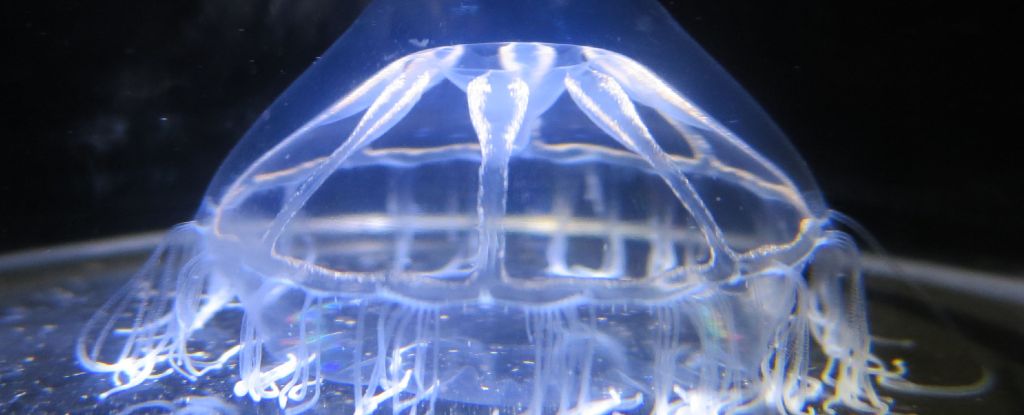
In a groundbreaking study, scientists have identified an enigmatic barrier in the Arctic Ocean that seems to restrict the movement of jellyfish. Specifically, the research focuses on the subspecies Botrynema brucei ellinorae, which exhibits two distinct morphotypes. Some jellyfish possess a knob-shaped structure on their hoods, while others remain smooth and unknobbed. This study reveals that these two forms are separated by a geographic threshold at 47 degrees north latitude, suggesting an unknown ecological boundary in the deep ocean.
The research team, led by marine biologist Javier Montenegro from the University of Western Australia, conducted a comprehensive survey of jellyfish distributions. They collected specimens using both research vessels and remotely-operated underwater vehicles, diving more than 1,000 meters (3,280 feet) below the surface. Historical observations and photographic records were also analyzed, providing a broader context for their findings.
One of the most surprising outcomes of the study was the genetic analysis, which showed that both morphotypes belong to the same genetic lineage. Despite this similarity, the knobbed jellyfish can be found worldwide, while the knobless variety appears to be confined to regions north of the North Atlantic Drift, indicating a semi-permeable faunal boundary. Montenegro explains, “The differences in shape, despite strong genetic similarities across specimens, above and below 47 degrees north hint at the existence of an unknown deep-sea bio-geographic barrier in the Atlantic Ocean.”
The Significance of the Discovery
The existence of this barrier could provide insights into the ecological dynamics of the North Atlantic Drift region. This area has been described as a “transition ecotone,” where boreal and subtropical species intermingle. The discovery points to a complex interplay of environmental factors that may govern the distribution of marine life.
Montenegro suggests that the knobbed jellyfish might possess certain advantages against predators in areas south of the Arctic and sub-Arctic regions. This morphological difference could play a significant role in the survival of these jellyfish as they navigate different ecological environments.
Further research is essential to uncover the mechanisms that maintain this invisible boundary. The study emphasizes the vast knowledge gaps regarding deep-sea ecosystems and the potential existence of similar barriers worldwide. “The presence of two specimens with distinctive shapes within a single genetic lineage highlights the need to study more about the biodiversity of gelatinous marine animals,” Montenegro states.
The findings of this research have been published in Deep Sea Research Part I: Oceanographic Research Papers, marking a significant contribution to the understanding of marine biodiversity and the complexities of oceanic ecosystems.
As scientists continue to explore the mysteries of the deep ocean, this study serves as a reminder of the intricate and often hidden connections that shape life beneath the waves. The implications of the discovery could resonate far beyond the Arctic, prompting further investigations into the barriers that may exist in other oceanic regions around the globe.






